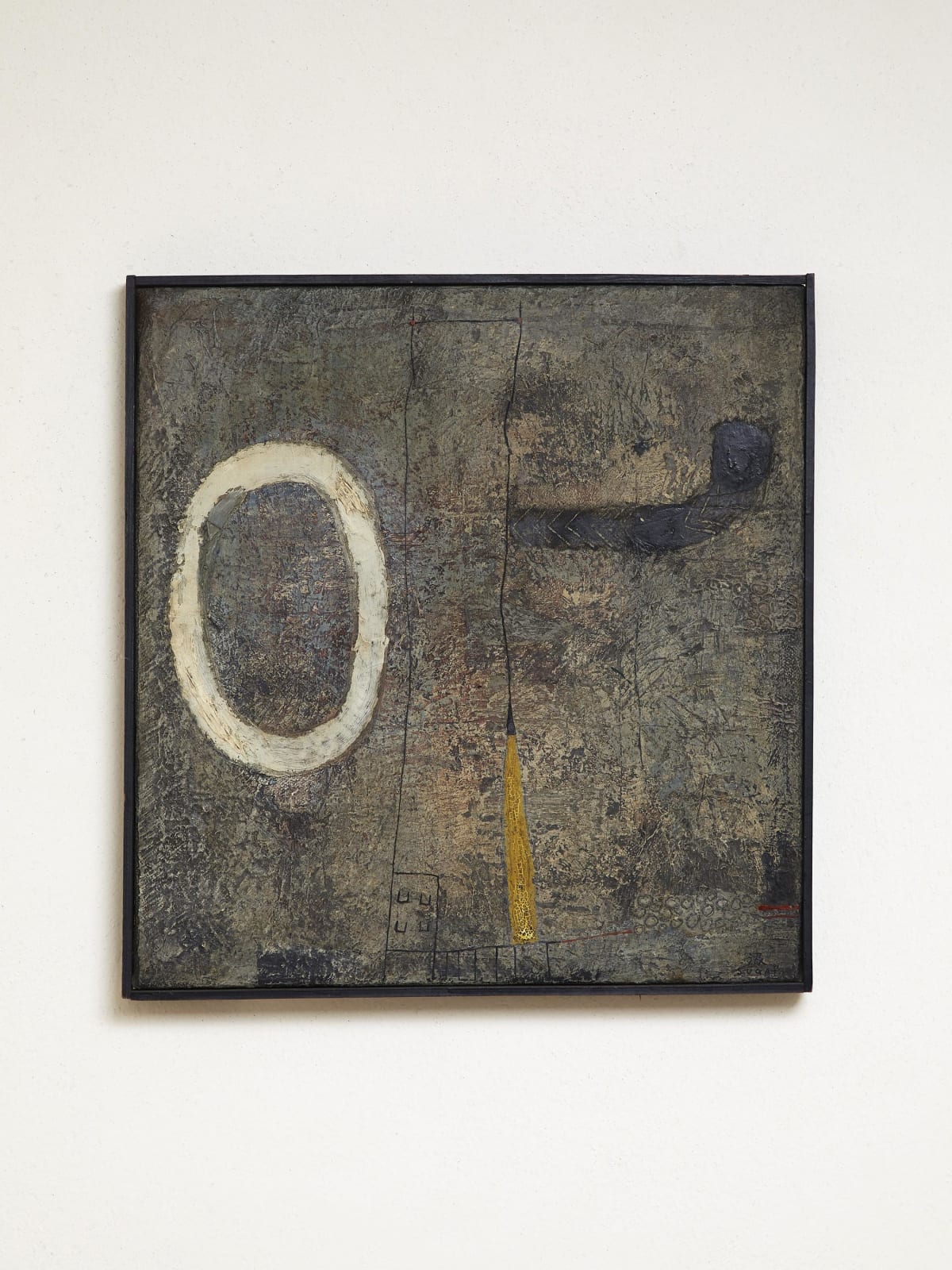Sugai Kumi (1919–1996)
Work
Oil on canvas, framed
Signed by the artist on the back
1954
40 x 38 cm
41 x 39.5 cm (overall)
Further images
Emerging from a vertical line at the center of the canvas, a black tail-like form extends outward to the right. This motif seems to be drawn from the artist’s 1953 work Le Chat. It also shares with this previous work a design featuring three dark black spots, which seems to suggest the existence of a real-life model. The scratched markings in the pigment expressing animal fur are a feature seen in this work that was not found in Le Chat and that was carried forward in works such as Le Diable in the following year (1955) and Animal in 1956, as the concrete expression of the cat’s tail was deconstructed even further. The white oval on the left side of the image seems to suggest some kind of symbolic signifier and also anticipates the group of works begun several years later that feature symbols forming abstract calligraphic designs.
Having arrived in France in 1952, Sugai achieved recognition in the Paris art world in 1954, the year his first solo exhibition held at the Galerie Craven was featured in various newspapers. The current work dates to this early period of the artist’s efforts of the late ’50s and ’60s, before he fully established his own painting style, which was to be praised for its “clarity.” Upon close inspection, however, although it appears in only a few brushstrokes, it is possible to discern the striking red color that would dominate his Diable series that was to come later. This is a fine work that is filled with a profound charm as a tableau in itself, while at the same time incorporating various features of this period as the artist gradually came into his own as “Parisian Sugaï” in both name and in practice.
Sugai Kumi (painter; 1919–1996)
Kobe-born painter. Dropped out of Osaka College of Art. Learned painting under Yoshihara Jiro, while conducting commercial design. Travelled to France at the age of 33 in 1952, and set his base in France since then. His style transformed from bold and heavy manner to flat, symbolized expression. One of the earliest Japanese artists to receive high recognition in Euro-America after the war.
Having arrived in France in 1952, Sugai achieved recognition in the Paris art world in 1954, the year his first solo exhibition held at the Galerie Craven was featured in various newspapers. The current work dates to this early period of the artist’s efforts of the late ’50s and ’60s, before he fully established his own painting style, which was to be praised for its “clarity.” Upon close inspection, however, although it appears in only a few brushstrokes, it is possible to discern the striking red color that would dominate his Diable series that was to come later. This is a fine work that is filled with a profound charm as a tableau in itself, while at the same time incorporating various features of this period as the artist gradually came into his own as “Parisian Sugaï” in both name and in practice.
Sugai Kumi (painter; 1919–1996)
Kobe-born painter. Dropped out of Osaka College of Art. Learned painting under Yoshihara Jiro, while conducting commercial design. Travelled to France at the age of 33 in 1952, and set his base in France since then. His style transformed from bold and heavy manner to flat, symbolized expression. One of the earliest Japanese artists to receive high recognition in Euro-America after the war.





